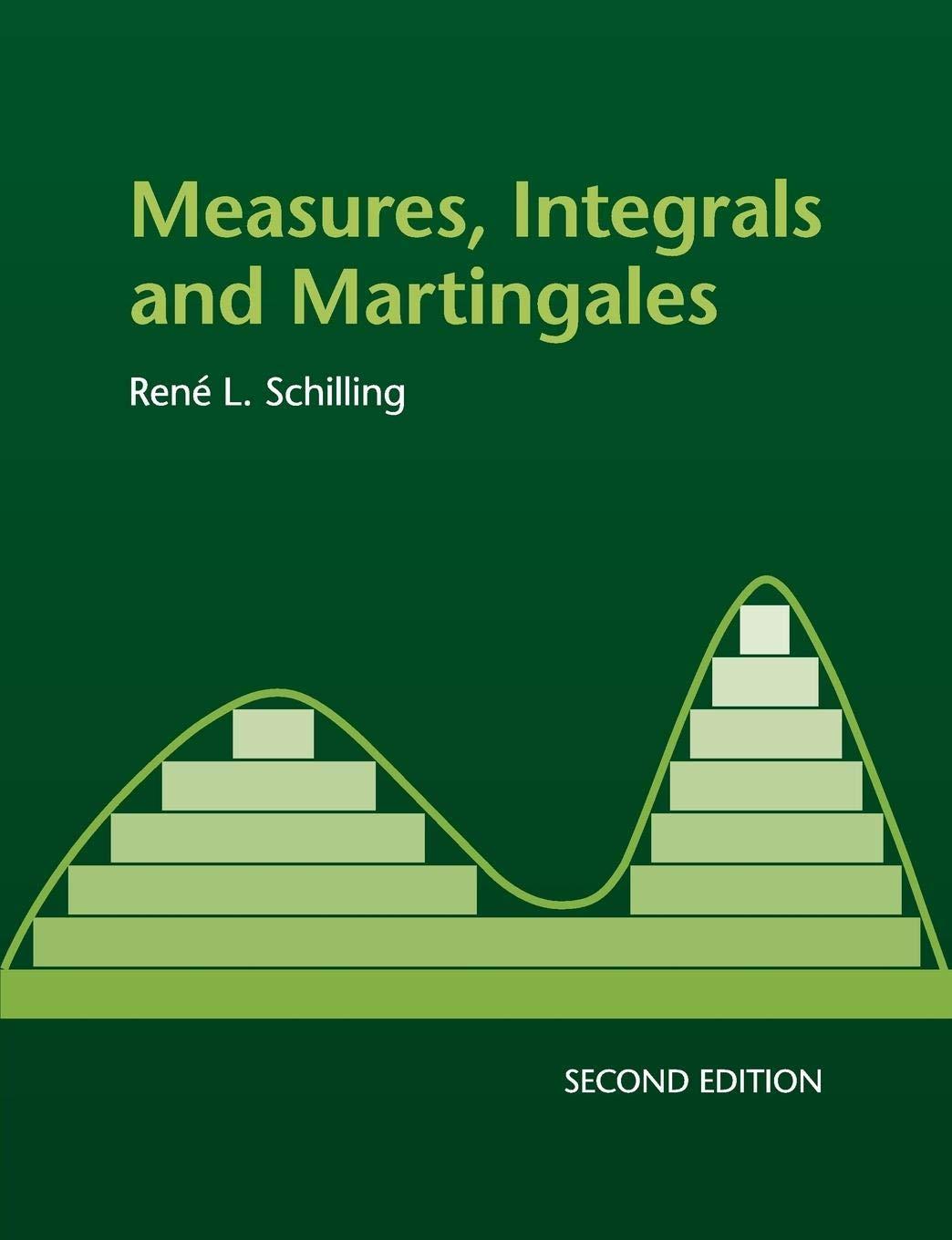The following exercise furnishes an example of a martingale (left(M_{n}ight)_{n in mathbb{N}}) on the probability space (left([0,1],
Question:
The following exercise furnishes an example of a martingale \(\left(M_{n}ight)_{n \in \mathbb{N}}\) on the probability space \(\left([0,1], \mathscr{B}[0,1], \lambda=\left.\lambda^{1}ight|_{[0,1]}ight)\) such that \(\lambda-\lim _{n ightarrow \infty} M_{n}\) exists but the pointwise limit \(\lim _{n ightarrow \infty} M_{n}(x)\) doesn't. Compare this with Problem 24.4 .
(i) Construct a sequence \(\left(\xi_{n}ight)_{n \in \mathbb{N}}\) of independent, identically Bernoulli-distributed random variables with \(\lambda\left\{\xi_{1}=1ight\}=\lambda\left\{\xi_{1}=-1ight\}=\frac{1}{2}\).
(ii) Let \(\mathscr{A}_{n}=\sigma\left(\xi_{1}, \ldots, \xi_{n^{2}}ight)\). Show that \(A_{n}:=\left\{\xi_{(n-1)^{2}+2}+\cdots+\xi_{n^{2}}=0ight\}\) is for each \(n \in\) \(\mathbb{N}, n \geqslant 2\), contained in \(\mathscr{A}_{n}\) and
\[\lim _{n ightarrow \infty} \lambda\left(A_{n}ight)=0 \quad \text { and } \quad \lambda\left(\limsup _{n ightarrow \infty} A_{n}ight)=1 .\]
Conclude that the set of all \(x\) for which \(\lim _{n} \mathbb{1}_{A_{n}}(x)\) exists is a null set.
[use the 'difficult' direction of the Borel-Cantelli lemma (Theorem 24.9 ). Moreover, Stirling's formula \(n ! \sim \sqrt{2 \pi n}(n / e)^{n}\) might come in handy.]
(iii) The sequence \(M_{2}:=0\) and \(M_{n+1}:=M_{n}\left(1+\xi_{n^{2}+1}ight)+\mathbb{1}_{A_{n}} \xi_{n^{2}+1}, n \in \mathbb{N}, n \geqslant 2\), defines a martingale \(\left(M_{n}, \mathscr{A}_{n}ight)_{n \geqslant 1}\).
(iv) Show that \(\lambda\left(M_{n+1} eq 0ight) \leqslant \frac{1}{2} \lambda\left(M_{n} eq 0ight)+\lambda\left(A_{n}ight)\).
(v) Show that for every \(x \in\left\{\lim _{n} M_{n}ight.\) exists \(\}\) the \(\operatorname{limit}^{\lim } \mathbb{1}_{A_{n}}(x)\) exists, too. Conclude that \(\lim _{n} \lambda\left(M_{n}=0ight)=1\) and that \(\lambda\left\{\lim _{n} M_{n}ight.\) exists \(\}=0\).
Step by Step Answer:






